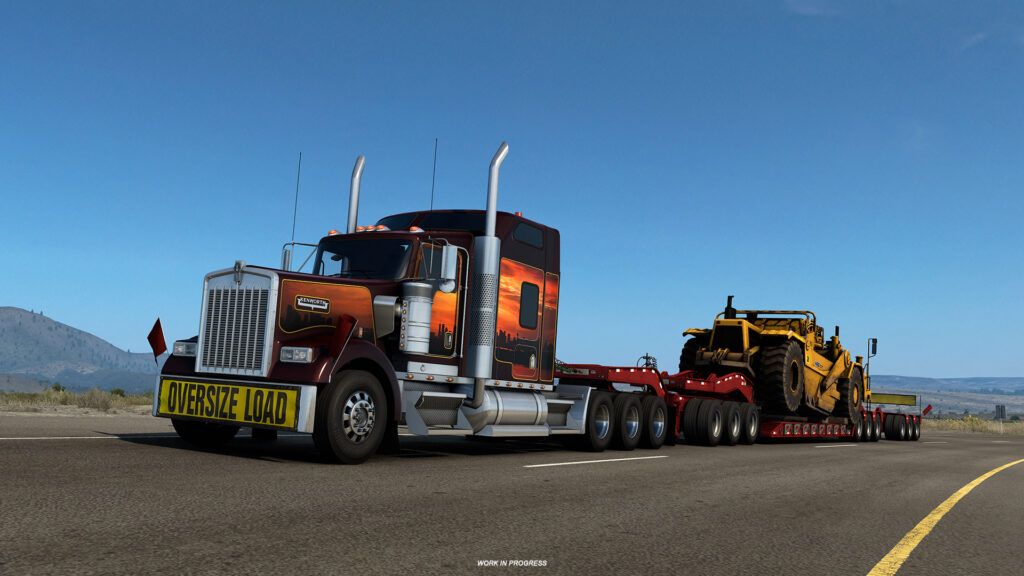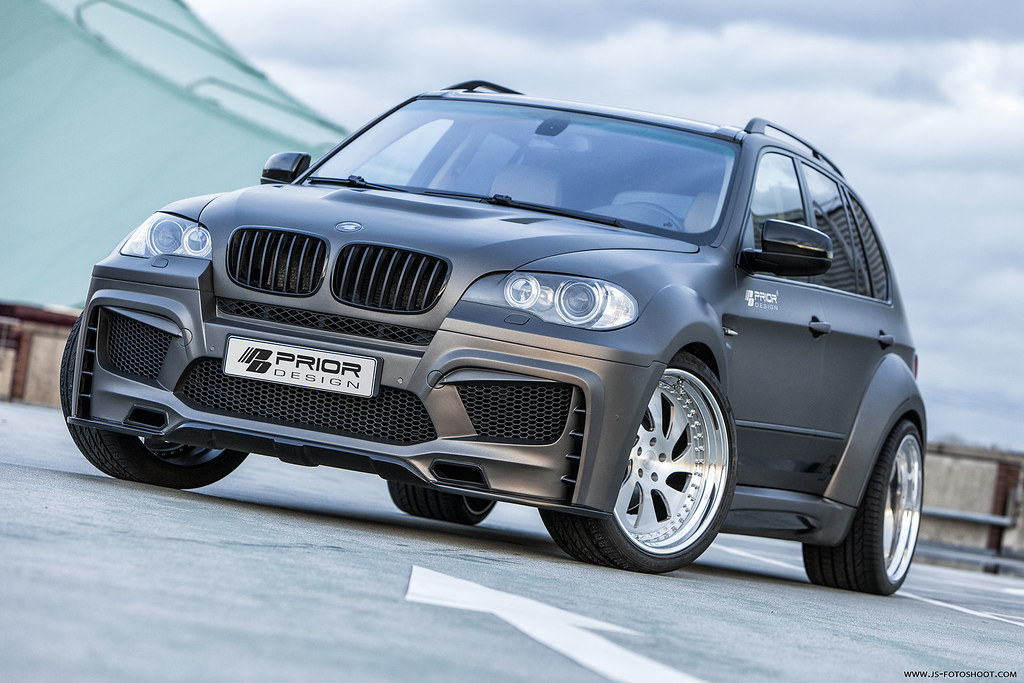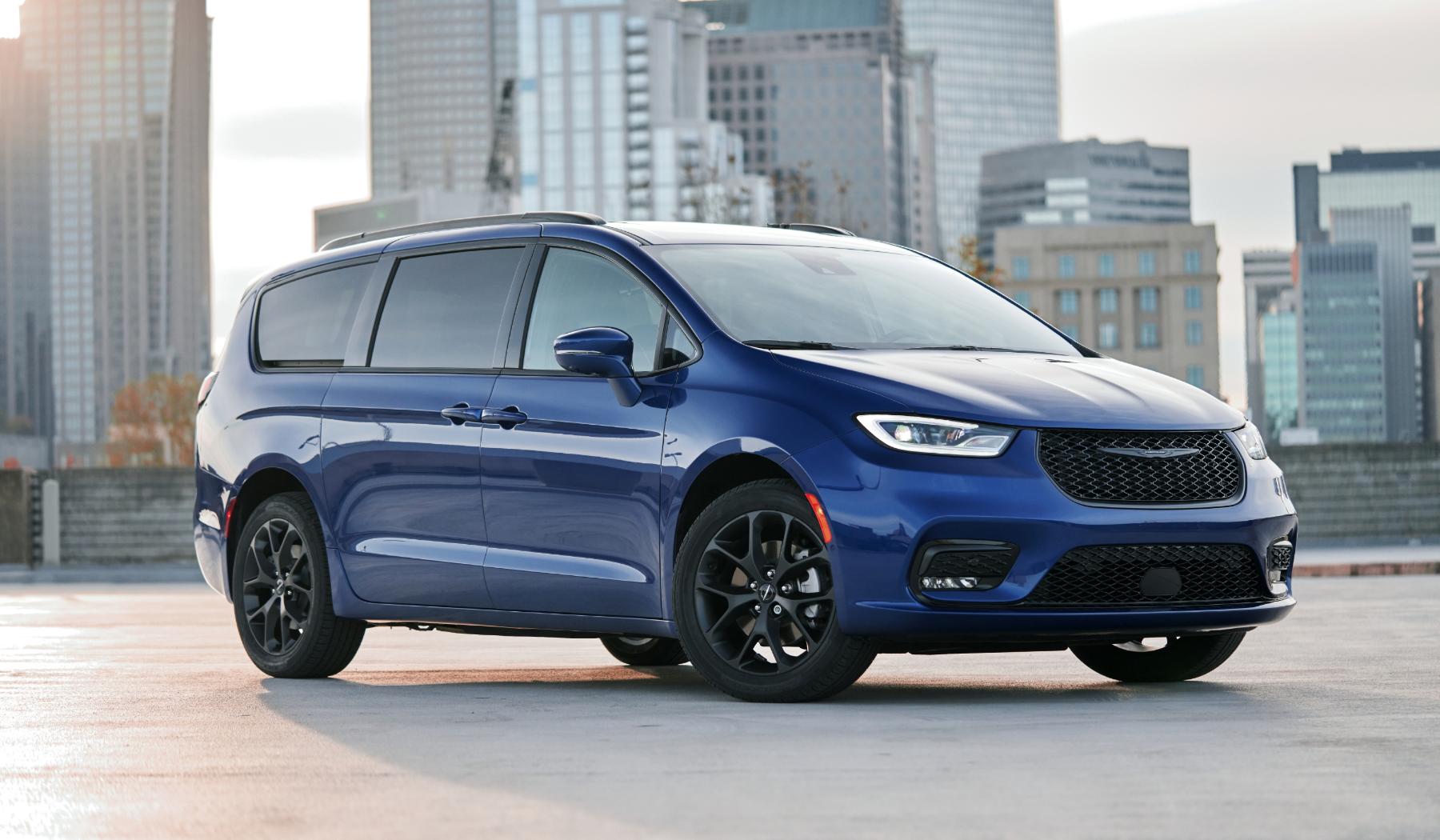
The minivan. Just the word can conjure images of suburban sprawl, juice box stains, and a certain… *lack* of automotive flair. For years, the segment has been the butt of jokes, dismissed by many as a practical necessity devoid of passion or personality. But hold onto your organic oat milk lattes, because something genuinely intriguing is happening in the world of family haulers.
Indeed, automakers’ Q1 sales reports are showing a clear and continuous uptick in minivan sales, indicating that customers are starting to notice this quiet revolution. What was once a bona fide kid carrier has become much more luxurious, incorporating modern technology and creature comforts that blur the lines between necessity and desirability. While minivans haven’t exactly outclassed SUVs in the popularity contest, they’re certainly carving out a renewed niche, embracing a function-over-form ethos that is now being tastefully married with actual form.
This isn’t your grandma’s beige box. We’re talking about a new breed of people mover, vehicles that are proving practicality doesn’t have to come at the expense of desirability. From groundbreaking electric options to hybrid-only efficiency and SUV-inspired aesthetics, these are the machines that are pushing the boundaries of what a minivan can be. So, let’s peel back the layers of preconceived notions and take a hard look at the minivans that still impress in 2025, offering a glimpse into a future where “van life” might just be cool again—even to Gen Z.
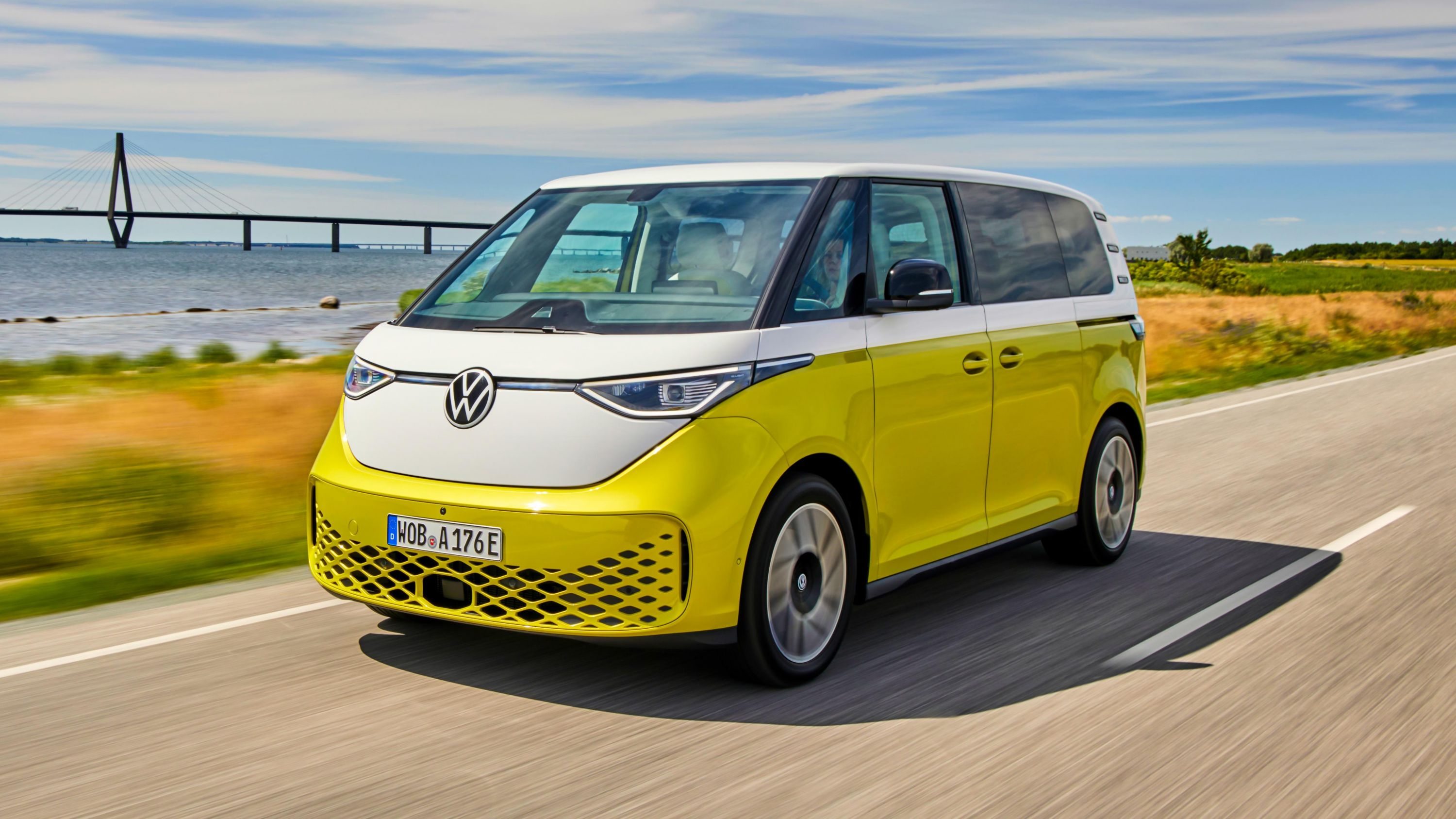
1. **Volkswagen ID. Buzz (2024-2025)**The Volkswagen ID. Buzz isn’t just a new minivan; it’s a revolutionary statement, successfully merging nostalgic Bus heritage with cutting-edge electric vehicle technology. This isn’t merely an electric conversion of an existing platform; it’s a ground-up reimagining of what a family vehicle can be in the modern era. Its distinctive design immediately sets it apart, with an upright greenhouse, short overhangs, and that unmistakable Volkswagen character that manages to be both retro and futuristic. It’s polarizing, sure, but at least it *is* something.
Underneath that charming exterior lies sophisticated electric vehicle architecture built on Volkswagen’s MEB platform. The 91 kWh battery pack delivers an EPA-estimated 234 miles of range. While this might not be “class-leading” in the broader EV world, it’s certainly adequate for most family duties, school runs, and weekend adventures. More impressively, the ID. Buzz supports DC fast charging up to 200 kW, enabling rapid charging sessions that can restore 80% capacity in approximately 33 minutes. This capability directly addresses one of the primary concerns about electric family vehicles: the dreaded road trip feasibility.
The interior showcases Volkswagen’s commitment to premium materials and thoughtful design, a welcome departure from the sea of plastics often found in traditional minivans. Here, you’ll find sustainable materials, ambient lighting, and a minimalist dashboard dominated by a large touchscreen infotainment system. The flat floor, a direct benefit of the electric platform, maximizes interior space and flexibility, while the sliding rear doors and available captain’s chairs provide excellent accessibility for passengers of all ages. This is a space designed for living, not just for hauling.
Perhaps what truly impresses about the ID. Buzz is Volkswagen’s willingness to take risks in what is often a profoundly conservative segment. By electrifying the minivan and wrapping it in bold, polarizing styling, they’ve created something genuinely new rather than merely iterating on existing formulas. The vehicle successfully bridges the gap between practical family transportation and desirable personal expression, proving that minivans don’t actually have to be glorified appliances. It’s a bold move, and honestly, a rather brilliant one.
Car Model Information: 2024 Volkswagen Tiguan 2.0T SE R-Line Black
Name: Volkswagen ID. Buzz
Manufacturer: Volkswagen
Production: June 2022 – present
ModelYears: 2025–present (North America)
Assembly: Hanover
Designer: Klaus Zyciora
Class: ubl
BodyStyle: minivan
Platform: Volkswagen Group MEB platform
Motor: ubl
Powerout: ubl
Adj: on
Abbr: on
Disp: out
Battery: Lithium-ion battery
Wheelbase: ubl
Length: ubl
Width: 1985 mm
Height: 1937 mm
Weight: 2459 kg
Categories: Articles with short description, CS1 German-language sources (de), Cars introduced in 2022, Commons category link from Wikidata, Electric concept cars
Summary: The Volkswagen ID. Buzz is a battery electric minivan produced by German manufacturer Volkswagen. Based on the dedicated battery electric MEB platform, it is the first production electric minivan from Volkswagen and part of the Volkswagen ID. series. A retro styled minivan, the design of the ID. Buzz is inspired by the Volkswagen Type 2 (T1) Microbus.
The vehicle was first shown as a concept car at the 2017 North American International Auto Show. The production vehicle was unveiled in March 2022 with production starting in June, and European deliveries in the second half of the year with two models: a five-seater under the name ID. Buzz, and a cargo van as the ID. Buzz Cargo. The U.S. production version had its North American launch in Huntington Beach, California, on 2 June 2023, and availability is slated for 2024 in a long-wheelbase version. This version will also be used for the California campervan variant of the ID. Buzz.
Also a reference to the sound of electricity, the name “Buzz” was derived from the word bus, as the original Volkswagen Type 2/Microbus is commonly known simply as the “Volkswagen Bus”.
Get more information about: Volkswagen ID. Buzz
Buying a high-performing used car >>>
Brand: Volkswagen Model: ID. Buzz
Price: $27,995 Mileage: 9,546 mi.

2. **Toyota Sienna (2021-2025)**Toyota’s decision to make the Sienna exclusively hybrid for its current generation represents one of the most significant powertrain innovations in minivan history. This wasn’t some half-hearted attempt at electrification; Toyota completely reimagined the Sienna around hybrid technology, creating a vehicle that delivers genuinely impressive fuel economy without sacrificing the space and capability families not just want, but *demand*. The hybrid system combines a 2.5-liter four-cylinder engine with electric motors to produce 243 total system horsepower, providing perfectly adequate performance while achieving EPA ratings of up to 36 mpg combined. That’s a serious number for a vehicle this size.
What truly sets the Sienna apart, and frankly, makes it a bit of a unicorn, is its available all-wheel-drive system. Unlike the front-wheel-drive bias of most minivans, the Sienna’s available AWD system uses a separate electric motor to power the rear wheels. This provides improved traction in adverse weather conditions without significantly impacting fuel economy, which is a neat trick. This capability makes the Sienna particularly appealing to families living in regions with challenging weather, where the combination of minivan practicality and all-weather capability was, until recently, pretty much unavailable. It’s a genuine differentiator.
Toyota’s legendary reputation for reliability and long-term durability adds significant value to the Sienna proposition. The hybrid powertrain, while seemingly complex, benefits from Toyota’s decades of hybrid development experience, providing confidence that the system will deliver consistent performance over many years of rigorous family service. The transition to hybrid power also conveniently sidesteps the transmission reliability concerns that have, let’s be honest, plagued some competing minivans, as the Sienna uses an electronically controlled continuously variable transmission specifically designed for hybrid applications. Smart move, Toyota.
Interior space and flexibility remain Sienna strong points, proving that hybrid packaging doesn’t have to compromise on what a minivan does best. Passenger or cargo capacity is barely impacted, if at all. The available captain’s chairs in the second row provide excellent comfort and access to the third row, while the fold-flat third-row seats create impressive cargo capacity when needed. The dashboard design intelligently prioritizes functionality over flash, featuring intuitive controls and clear displays that genuinely enhance ease of use during the often chaotic ballet of busy family life. Advanced safety features come standard, demonstrating that environmental responsibility and family practicality can coexist without compromise.
Car Model Information: 2016 Toyota Sienna XLE
Name: Toyota Sienna
Caption: 2021 Toyota Sienna XLE (AXLH40)
Manufacturer: Toyota
Aka: Toyota Granvia (China, 2022–present)
Production: August 1997 – present
ModelYears: 1998–present
Class: Minivan
BodyStyle: minivan
Predecessor: unbulleted list
Categories: 2000s cars, 2010s cars, 2020s cars, All-wheel-drive vehicles, All articles with dead external links
Summary: The Toyota Sienna is a minivan manufactured and marketed by Toyota primarily for the North American market. It is named for the Italian city of Siena, in the region of Tuscany. It replaced the first generation Previa van in 1997 (for the 1998 model year) with a more conventional front-wheel drive layout and shares a heavily revised platform with the Camry. Both the Previa and original Sienna were smaller than the other minivans they competed against, but a redesign in 2003 (for the 2004 model year) increased the dimensions to match those of its competitors.
It was redesigned again in 2010 (for the 2011 model year). The third generation Sienna went on sale in the United States in February 2010 and is the first Sienna to ever receive a “Top Safety Pick” award from the Insurance Institute for Highway Safety. A 2020 redesign (for the 2021 model year) saw the Sienna becoming a hybrid vehicle for its fourth generation. While previous generations of the Sienna were exported to select Asian and European markets, the fourth generation is the first to be produced outside of the United States as Chinese production commenced in July 2021 by two Toyota joint ventures. In China, it is also marketed as the Toyota Granvia.
Following the discontinuation of General Motors’s all-wheel drive minivans in 2006, the Sienna was the only minivan in its class offered with AWD in North America until the 2021 Chrysler Pacifica was introduced with an AWD option in 2020.
The Sienna is not made in right-hand drive configuration and is not sold in right-hand drive markets. The market segment in many of these markets is occupied by the Alphard/Vellfire and the HiAce/Granvia.
As of the fourth generation, introduced in 2020, the Sienna is built on Toyota’s TNGA-K platform, which it shares with most of Toyota’s other large MPVs and crossovers.
Get more information about: Toyota Sienna
Buying a high-performing used car >>>
Brand: Toyota Model: Sienna
Price: $24,500 Mileage: 78,999 mi.
Read more about: Navigating the New Car Market: 15 Models That Don’t Justify Their Premium Price Tags for Smart Buyers
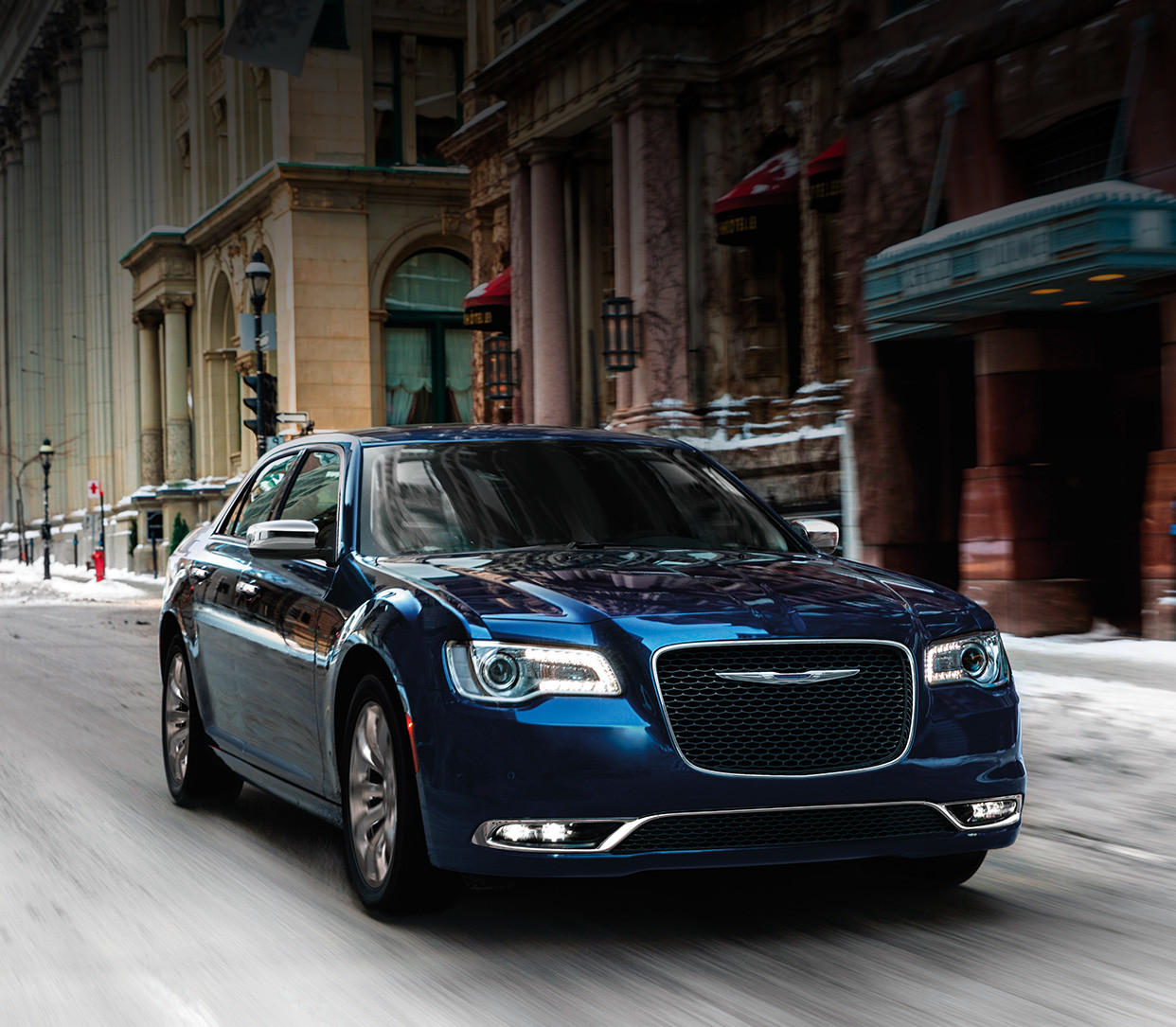
3. **Chrysler Pacifica Hybrid (2017-2025)**The Chrysler Pacifica Hybrid deserves a significant shout-out as the first mainstream plug-in hybrid minivan, bravely introducing electrification to the segment years before most competitors even considered it. This wasn’t just a technological demonstration; it’s a fully realized plug-in hybrid system that provides genuine electric-only driving capability for typical daily driving scenarios. The 16 kWh battery pack enables approximately 32 miles of electric-only range, which is often more than enough to handle those school runs, quick errands, and daily commutes without burning a single drop of gasoline. That’s real-world impact.
When the battery is depleted, the Pacifica Hybrid seamlessly operates as a conventional hybrid. It elegantly blends power from the 3.6-liter V6 engine and electric motors to maintain efficiency while providing the ample performance families expect from a full-size minivan. This clever dual-mode operation means families can enjoy all the benefits of electric driving without the dreaded range anxiety, as the gasoline engine provides practically unlimited range for those longer road trips. The total system output of 260 horsepower ensures that performance doesn’t suffer for efficiency, offering smooth acceleration and ample power for highway merging and passing.
The Pacifica’s interior arguably represents the current pinnacle of minivan luxury and technology integration. The available Stow ‘n Go seating system remains a stroke of genius, allowing both the second and third-row seats to fold completely into the floor. This creates a vast, flat cargo area that can instantly transform the vehicle into a bona fide moving van when needed. This incredible flexibility, combined with the Pacifica’s sophisticated interior materials and thoughtful design, creates an environment that truly feels more like a luxury SUV than a traditional minivan. It’s surprisingly upscale.
Technology integration throughout the Pacifica consistently impresses with its features and seamless functionality. Features like the available Uconnect Theater system provide rear-seat passengers with wireless streaming capabilities, various gaming options, and connectivity that genuinely keeps occupants entertained during longer journeys, potentially preventing sibling squabbles. The driver isn’t left out either, benefiting from an intuitive infotainment system, comprehensive connectivity options, and a full suite of advanced driver assistance systems that genuinely make daily driving safer and significantly less stressful.
Car Model Information: 2022 Toyota Tacoma SR5
Name: Chrysler Pacifica (RU)
Manufacturer: Chrysler (automotive brand)
Aka: Chrysler Voyager,Chrysler Grand Caravan (Canada, 2021–present)
Production: 2016–present
ModelYears: 2017–present
Assembly: Windsor, Ontario
Designer: Irina Zavatski,Winnie Cheung (interior)
Class: Minivan
BodyStyle: 5-door minivan
Layout: Front-engine, front-wheel drive,Front-engine, all-wheel drive
Platform: Compact U.S. Wide platform
Related: Chrysler 200#Second generation (2014–)
Engine: Chrysler Pentastar engine#3.6L,FCA Global Medium Engine
Motor: 2x electric motors (SiEVT main motor & motor generator; PHEV)
Transmission: ZF 9HP transmission,automatic transmission,Continuously variable transmission
Drivetrain: PHEV
ElectricRange: cvt
Battery: val,lithium-ion battery
Wheelbase: 3089 mm
Abbr: on
Order: flip (hybrid)
Length: 203.6 in
Width: 79.6 in
Height: convert
Weight: {{convert,1964,kg,lb,abbr=on,order=flip
Predecessor: Chrysler minivans (RT)
Categories: 2010s cars, All-wheel-drive vehicles, Articles with short description, CS1 Spanish-language sources (es), Cars introduced in 2016
Summary: The Chrysler Pacifica is a minivan produced by the Chrysler division of Stellantis since the 2017 model year. Replacing the Chrysler Town & Country, the Pacifica is the sixth generation of Chrysler minivans, taking its name from the 2004–2008 product line. Along with serving as the first minivan with a plug-in hybrid drivetrain, the Pacifica has also served as a platform for autonomous vehicle development.
For the 2020 model year, Chrysler repackaged the lower-trim versions of the Pacifica as a revived Chrysler Voyager, largely to expand fleet sales of the model line; following the retirement of the Dodge Grand Caravan, the Chrysler Voyager was introduced in Canada for 2021 as the Chrysler Grand Caravan (moving the nameplate from Dodge to Chrysler after 36 years). Following the retirement of the Chrysler 300 sedan, the Pacifica/Voyager/Grand Caravan is currently the only vehicle marketed by Chrysler.
Chrysler has assembled the Pacifica minivan (and the Voyager/Grand Caravan) in its Windsor Assembly facility in Ontario (home to Chrysler minivan assembly since 1983).
Get more information about: Chrysler Pacifica (minivan)
Buying a high-performing used car >>>
Brand: Chrysler Model: Pacifica Hybrid
Price: $25,987 Mileage: 57,020 mi.
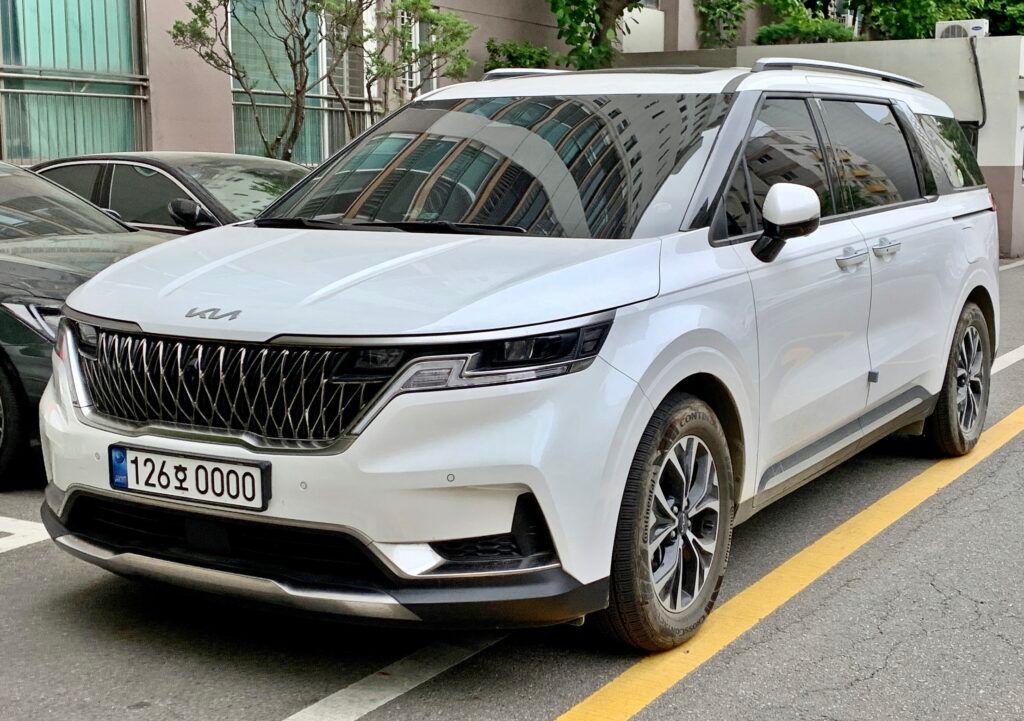
4. **Kia Carnival (2022-2025)**Kia’s approach with the Carnival isn’t just an update; it’s a bold reimagining of minivan aesthetics and positioning, successfully creating a vehicle that provides all the traditional minivan functionality while cleverly sidestepping the “stigma” often associated with the segment. The Carnival’s exterior design language unapologetically borrows heavily from SUV styling cues, featuring a tall, upright stance, an aggressive front fascia, and cladding elements that help it blend seamlessly with contemporary family vehicle trends. This design philosophy is a clear statement: minivans don’t have to *look* like traditional minivans to offer superior functionality. It’s a minivan in a clever SUV disguise, and it works.
The interior showcases Kia’s relentless commitment to premium materials and thoughtful design throughout the cabin. The available captain’s chairs in the second row provide exceptional comfort and adjustability, while the third row surprisingly offers genuine adult-friendly seating, a stark contrast to the often-cramped accommodations found in many three-row SUVs. The attention to detail in material selection, fit and finish, and overall design execution truly rivals luxury vehicles costing significantly more. This makes the Carnival feel like a genuine value proposition rather than just another budget alternative.
Kia’s comprehensive warranty coverage adds significant, undeniable value to the Carnival ownership proposition. Offering 10-year/100,000-mile powertrain coverage and 5-year/60,000-mile basic coverage, it far exceeds what most competitors dare to offer. This warranty commitment isn’t just a marketing ploy; it demonstrates Kia’s profound confidence in their product while providing buyers with long-term peace of mind. This is particularly valuable for families who plan to keep their vehicle for many years, relying on it day in and day out.
Performance from the 3.5-liter V6 engine provides perfectly adequate power for all family duties, all while maintaining reasonable fuel economy for the segment. The eight-speed automatic transmission operates smoothly, providing well-spaced ratios that optimize both performance and efficiency. The ride quality strikes an excellent balance between comfort and control, absorbing road imperfections gracefully while maintaining stability during highway driving and cornering. What truly sets the Carnival apart is Kia’s success in creating a vehicle that delivers all the functional advantages of a traditional minivan without the aesthetic and social penalties often associated with the segment.
Car Model Information: 2025 Kia Carnival LXS
Name: Kia Carnival
Caption: Kia Carnival (KA4)
Manufacturer: Kia
Aka: Kia Sedona (1999–2021)
Production: January 1998–present
ModelYears: 2002–present (North America)
Class: Minivan
BodyStyle: minivan
Layout: Front-engine, front-wheel-drive layout
Categories: 2000s cars, 2010s cars, All Wikipedia articles written in British English, All articles with dead external links, All articles with unsourced statements
Summary: The Kia Carnival (Korean: 기아 카니발) is a minivan manufactured by Kia since 1998. It is marketed globally under various nameplates, prominently as the Kia Sedona.
The first-generation Carnival was introduced in January 1998, and was marketed in a single, short wheelbase version. Second-generation models were marketed (2006–2014) in short and long wheelbase variants. A rebadged variant of the second generation was offered in North America as the Hyundai Entourage (2007–2009). Beginning in 2010, the second-generation model received updated equipment, including Kia’s corporate Tiger Nose grille, as introduced by its then new design chief, Peter Schreyer. Kia introduced its third-generation minivan in 2014, solely in a long wheelbase format. The fourth generation was introduced in 2020, when Kia also began using the Carnival nameplate worldwide.
Get more information about: Kia Carnival
Buying a high-performing used car >>>
Brand: Kia Model: Carnival
Price: $37,760 Mileage: 11,117 mi.
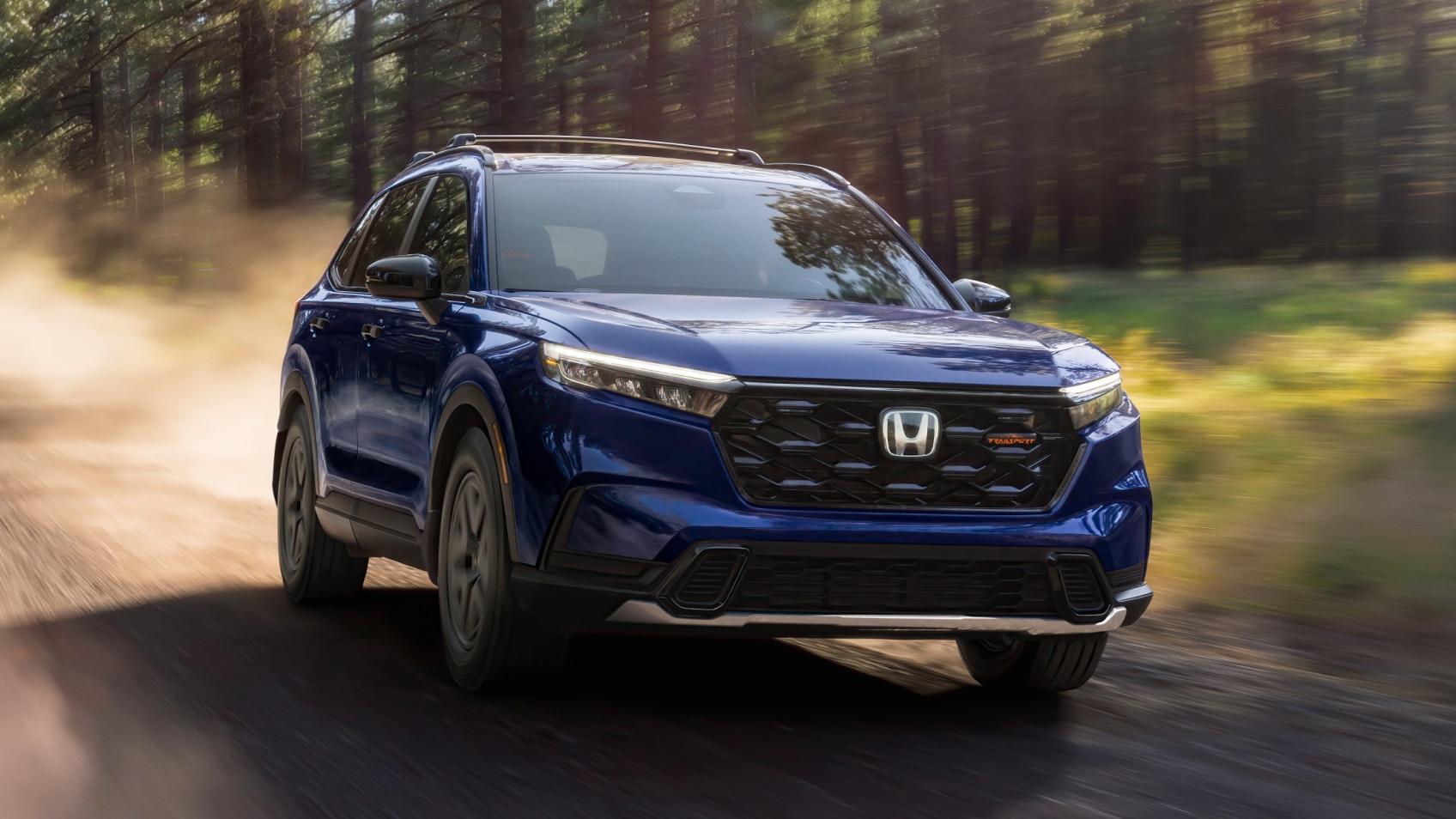
5. **Honda Odyssey Touring Elite (2018-2025)**While the current Honda Odyssey generation has been available since 2018, the top-tier Touring Elite trim continues to impress with its comprehensive feature set and meticulous attention to luxury details. These elements genuinely elevate it above typical family transportation. The Odyssey’s fundamental strengths—superior build quality, refined driving characteristics, and thoughtful, family-focused features—remain as relevant in 2025 as they were at launch. This demonstrates the enduring value of solid engineering over fleeting, flashy innovation. It’s a testament to doing things right the first time.
The available vacuum cleaner system, ingeniously built into the rear cargo area, represents precisely the kind of practical innovation that makes Honda engineering legendary among families. This isn’t just a gimmick; it’s a genuinely useful feature that addresses real-world family vehicle challenges. It provides convenient cleanup capability for the inevitable spills, crumbs, and general debris that accumulate during active family life. Combined with the comprehensive storage solutions throughout the cabin, features like this prove Honda’s deep, almost empathetic understanding of their target market’s daily realities. The CabinWatch and CabinTalk systems further enhance this, allowing parents to monitor and communicate with rear-seat passengers without distraction.
Performance from the 3.5-liter V6 engine, expertly paired with a 10-speed automatic transmission, provides smooth, refined operation with perfectly adequate power for all family driving scenarios. Honda’s engineering expertise ensures that the powertrain operates quietly and efficiently, with smooth shifting characteristics and well-calibrated throttle response that makes daily driving pleasant rather than merely functional. The suspension tuning strikes an excellent balance between ride comfort and handling precision, providing confidence-inspiring dynamics without sacrificing an ounce of passenger comfort.
Interior quality throughout the Odyssey consistently impresses, with materials, fit and finish, and attention to detail that genuinely rivals luxury vehicles. The available leather seating surfaces, premium audio systems, and comprehensive climate control create an environment that feels genuinely upscale rather than merely adequate. The Magic Slide second-row seats offer exceptional flexibility, allowing easy access to the third row while maintaining comfort for second-row occupants. Honda’s reputation for long-term reliability simply adds significant value to the Odyssey proposition, as families can expect years of dependable service with minimal unexpected maintenance costs.
Car Model Information: 2019 Honda Odyssey EX-L
Name: Honda Odyssey
Caption: 2018 Honda Odyssey EX-L
Manufacturer: Honda
Production: 1994–present
ModelYears: 1995–present
Class: Minivan
BodyStyle: minivan
Layout: Front-engine, front-wheel-drive layout
Categories: 2000s cars, 2010s cars, 2020s cars, All Wikipedia articles written in American English, All articles with dead external links
Summary: The Honda Odyssey is a minivan manufactured by Japanese automaker Honda and marketed for the North American market, introduced in 1994.
The Odyssey was conceived and engineered in Japan after the country’s economic crisis of the 1990s, which constrained the vehicle’s size and concept and dictated its manufacture in an existing facility with minimal modification. The result was a smaller minivan, in the compact MPV class, that was well received in the Japanese domestic market, but less well received in North America. The first-generation Odyssey was marketed in Europe as the Honda Shuttle.
Subsequent generations diverged to reflect market variations, and Honda built a plant in Lincoln, Alabama, United States, that could manufacture larger models. Since 1998, Honda has marketed a larger (large MPV-class) Odyssey in North America and a smaller Odyssey in Japan and other markets. Until 2005, the North American Odyssey was also sold in Japan as the LaGreat (ラグレイト, Ragureito). Both versions of the Odyssey were sold in Japan at Honda Clio dealership locations. Both versions of the Odyssey are sold in the Middle East.
Get more information about: Honda Odyssey (North America)
Buying a high-performing used car >>>
Brand: Honda Model: Odyssey
Price: $24,993 Mileage: 69,005 mi.

6. **Dodge Grand Caravan (2008-2020, Discontinued)**The Dodge Grand Caravan. For years, the name itself was shorthand for family practicality in America, but its discontinuation in 2020 served as a stark, somewhat ignominious, end to a once-pioneering vehicle. It wasn’t just the end of an era; it was a cautionary tale, a lesson in automotive neglect. For a full decade leading up to its demise, this van remained fundamentally unchanged, a rolling monument to technological stagnation. Its architecture, powertrains, and design elements were already playing catch-up when rivals were genuinely pushing boundaries. It was a prime example of how quickly a market leader can become an automotive punching bag without consistent investment.
Under the hood, the Grand Caravan stubbornly clung to its 3.6-liter Pentastar V6. While mechanically robust, it was paired with a six-speed automatic transmission that felt utterly archaic next to the multi-speed units blossoming elsewhere. This combination delivered performance that was, generously, “adequate,” but it utterly failed to compete with the fuel economy benchmarks of hybrid minivans or the refined power delivery of more modern setups. The complete absence of any electrification options wasn’t just a misstep; it was a defiant refusal to acknowledge market trends demanding greater efficiency and reduced emissions. Gen Z, naturally, would find this simply baffling.
Step inside, and it became painfully clear where Dodge’s priorities *weren’t*. The interior materials and design had achieved a state of timeless… utilitarianism, shall we say? Compared to the increasingly upscale and thoughtfully designed cabins of its rivals, the Grand Caravan’s interior felt perpetually dated, an aesthetic frozen in a bygone era. The infotainment system, even after updates, lagged woefully behind, offering little in the way of responsiveness or modern smartphone integration. Crucially, its safety technology integration was significantly behind contemporary standards; advanced driver assistance systems were either nonexistent or buried in expensive option packages, making it feel dangerously unequipped for modern family transport.
Ultimately, the Grand Caravan’s long, slow march to the automotive graveyard was largely self-inflicted. Fiat Chrysler’s decision to effectively abandon the mainstream minivan market meant milking existing investments dry rather than developing a competitive product. It’s a classic story: once an innovator, reduced to an uncompetitive, outdated option until sales finally flatlined. This serves as a potent reminder that even successful automotive franchises demand continuous evolution, or they risk becoming little more than punchlines in the ever-accelerating narrative of what makes Gen Z snicker.
Car Model Information: 2024 Volkswagen Tiguan 2.0T SE R-Line Black
Caption: 2011 Dodge Grand Caravan Mainstreet
Name: Dodge Grand Caravan
Manufacturer: Chrysler Corporation,Daimler AG,Chrysler LLC,Chrysler Group LLC,FCA US LLC
Class: Minivan
Layout: FF layout,F4 layout
Production: November 2, 1983 –August 21, 2020
ModelYears: 1984–2020
Related: Plymouth Voyager,Chrysler Town & Country (minivan),Dodge Mini Ram,Chrysler Voyager,Volkswagen Routan
Assembly: Windsor, Ontario,Fenton, Missouri,Fenton, Missouri,Fuzhou
Successor: Dodge Journey,Chrysler Voyager
Categories: All-wheel-drive vehicles, All articles with unsourced statements, Articles with short description, Articles with unsourced statements from December 2017, Articles with unsourced statements from May 2009
Summary: The Dodge Caravan is a series of minivans manufactured by Chrysler from the 1984 through 2020 model years. The Dodge version of the Chrysler minivans, was marketed as both a passenger van and a cargo van (the only version of the model line offered in the latter configuration). For 1987, the model line was joined by the long-wheelbase Dodge Grand Caravan. Produced in five generations across 36 model years, the Dodge Caravan is the second longest-lived Dodge nameplate (exceeded only by the Dodge Charger). Initially marketed as the Dodge counterpart of the Plymouth Voyager, the Caravan was later slotted between the Voyager and the Chrysler Town & Country. Following the demise of Plymouth, the model line became the lowest-price Chrysler minivan, ultimately slotted below the Chrysler Pacifica.
Sold primarily in the United States and Canada, the Dodge Caravan was also marketed in Europe and other international markets under the Chrysler brand (as the Chrysler Voyager or Chrysler Caravan). From 2008 onward, Dodge marketed the model line only as the Grand Caravan; Ram Trucks sold a cargo-only version of the model line as the Ram C/V Tradesman. The model line was also rebranded as the Volkswagen Routan from 2009 through 2014.
After the 2020 model year, the Dodge Grand Caravan was discontinued, ending production on August 21, 2020. For 2021 production, the Grand Caravan nameplate was moved to Chrysler, which used it for a Canadian-market version of the Chrysler Pacifica (in the United States, the exact vehicle was marketed as the Chrysler Voyager).
For its entire production run, the Dodge Caravan/Grand Caravan was manufactured by Chrysler Canada (now Stellantis Canada) at its Windsor Assembly facility (Windsor, Ontario). From 1987 until 2007, the model line was also manufactured by Chrysler at its Saint Louis Assembly facility (Fenton, Missouri). Since their introduction in late 1983, over 14.6 million Chrysler minivans have been sold worldwide (including export versions and versions sold through rebranding).
Get more information about: Dodge Caravan
Buying a high-performing used car >>>
Brand: Dodge Model: Grand Caravan
Price: $27,995 Mileage: 9,546 mi.
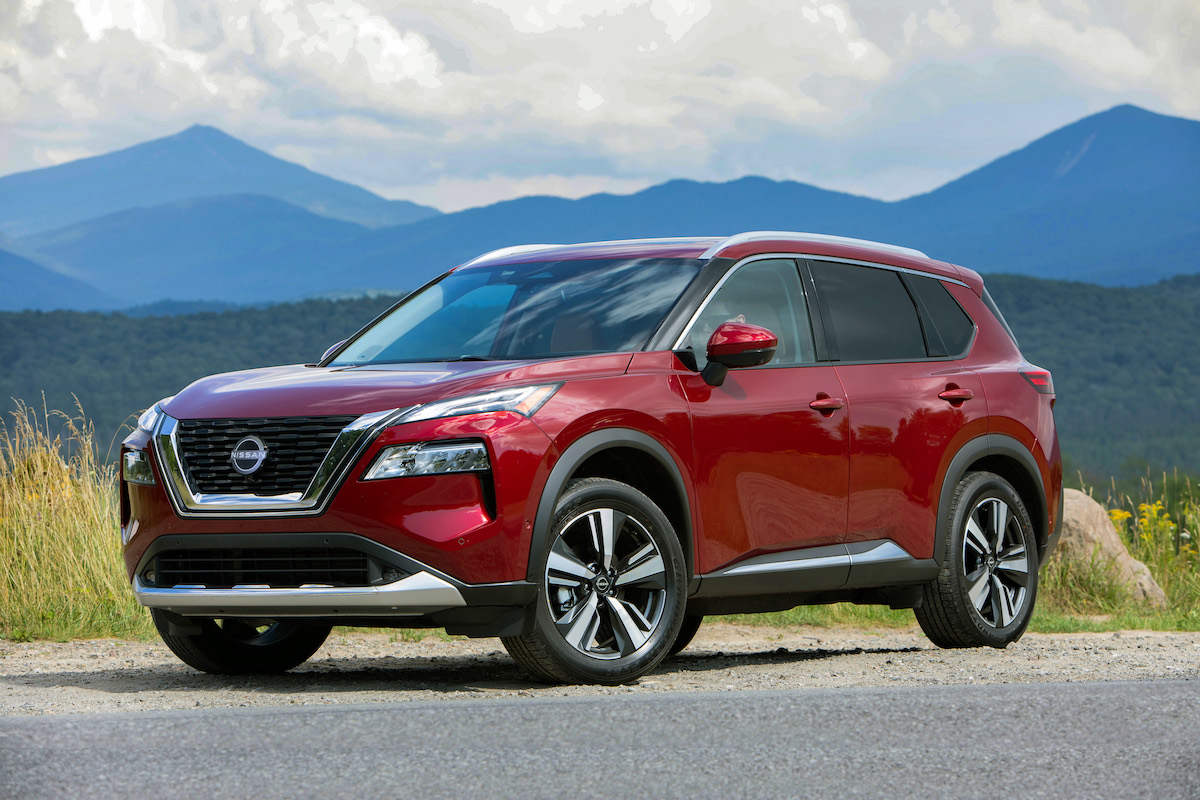
7. **Nissan NV200 (2013-2020, Discontinued)**The Nissan NV200, a vehicle whose brief sojourn in the American minivan market can only be described as a masterclass in misplaced priorities. This wasn’t a minivan; it was a commercial van, designed for hauling boxes and plumbing supplies, that someone at Nissan decided could moonlight as a family hauler. Unsurprisingly, it never successfully shed its utilitarian roots, utterly failing to deliver the comfort, refinement, or features that American families rightfully expected. Its fundamental architecture, built for maximum cargo and minimal cost, presented insurmountable challenges, proving that no amount of marketing spin can turn a workhorse into a show pony.
Propelling this… *ambitious* offering was a 2.0-liter four-cylinder engine paired with a continuously variable transmission. This wasn’t merely underpowered; it was arguably one of the most lethargic powertrains ever bestowed upon an American minivan. Imagine the existential dread of attempting a highway merge with a full load of kids, feeling less like a driver and more like a land-speed record attempt in reverse. The CVT only exacerbated the misery, delivering sluggish, unresponsive power when competitors were offering smooth, potent V6s with far more sophisticated multi-speed automatics. It was an exercise in automotive exasperation.
Step inside, and the NV200’s commercial origins shouted louder than a toddler in a toy store. Despite its van-like dimensions, passenger space felt disappointing, thanks to an architecture that prioritized cargo dimensions over human ergonomics. Seating was awkward, adjustability was minimal, and cushioning felt like an afterthought. Materials throughout the cabin were, shall we say, “robustly functional”—hard plastics and basic fabrics that were utterly out of place in a family vehicle. Infotainment was primitive, lacking basic smartphone integration, and safety equipment was equally sparse, leaving occupants woefully unprotected by modern standards.
Ultimately, Nissan never truly addressed the glaring mismatch between the NV200’s commercial DNA and the discerning expectations of American minivan buyers. Instead of investing in significant modifications for passenger comfort and features, Nissan opted for a “price-leader” strategy, a desperate race to the bottom. This approach proved unsustainable; even budget-conscious families eventually realized they deserved a superior overall experience. The NV200, therefore, quietly slipped into discontinuation, a potent reminder that a cheap price tag can’t compensate for a profoundly compromised product that Gen Z would simply ignore.
Car Model Information: 2020 Nissan NV200 S
Name: Nissan NV200 (M20)
Caption: A silver Nissan NV200 van
Manufacturer: Nissan
Aka: unbulleted list
Production: 2009–present
Assembly: ubl
Class: Light commercial vehicle
BodyStyle: van
Layout: Front-engine, front-wheel-drive,Front-engine, four-wheel-drive
Platform: Nissan B platform
Engine: Nissan HR engine,Straight-four engine
Motor: Nissan EM motor
Transmission: Continuously variable transmission
Wheelbase: unbulleted list
Abbr: on
Order: flip (North America)
Length: unbulleted list
Width: unbulleted list
Height: unbulleted list
Predecessor: Renault Kangoo#Kangoo I (1997–2007)
Successor: Nissan NV250
Categories: 2010s cars, 2020s cars, All-wheel-drive vehicles, All articles with dead external links, Articles with Japanese-language sources (ja)
Summary: The Nissan NV200 is a light commercial and leisure activity, 4/5-door van designed and produced by the Japanese automaker Nissan since 2009.
Get more information about: Nissan NV200
Buying a high-performing used car >>>
Brand: Nissan Model: NV200
Price: $14,691 Mileage: 95,295 mi.

8. **Chevrolet Express Passenger Van (1996-2025)**Alright, history buffs and automotive archaeologists, gather ‘round, because the Chevrolet Express Passenger Van demands our attention. This isn’t just a vehicle that’s been around for a while; this is automotive stagnation elevated to an art form. With fundamental architecture largely untouched since the mid-1990s, the Express has defiantly refused to evolve for nearly three decades. While not a “minivan” in the modern sense, its continued existence in 2025 serves as an astonishing testament to how manufacturers can simply let entire segments languish, content to keep production ticking over for specialized commercial markets. It’s a meticulously preserved fossil, showcasing tech and designs that were outdated when dial-up internet was cutting edge.
Underneath its unchanged sheet metal, the Express offers powertrains whose lineage stretches back through automotive generations. Its engines and transmissions belong in a museum exhibit, not on a 2025 highway, delivering fuel economy figures so comically abysmal they almost circle back to impressive in their sheer inefficiency. The base V6 struggles valiantly, while available V8s guzzle fuel at rates that would make an oil executive blush. The very concept of electrification has simply bypassed the Express, leaving it isolated as the world embraces tighter emissions standards and rising fuel costs. It’s a rolling anachronism in every sense.
The interior design and materials are a masterclass in prioritizing rugged durability over any semblance of comfort, refinement, or aesthetic appeal. The dashboard looks like it was penned during the Clinton administration, featuring basic instrumentation, minimal storage, and hard-wearing materials appropriate for a work truck, but utterly inadequate for passenger transportation. Climate control is manual, infotainment primitive, and seat comfort a cruel joke. It’s a cabin designed for enduring, not enjoying, perfectly illustrating the gulf between commercial and consumer expectations.
And the safety technology? A barren landscape. The Express is almost comically devoid of advanced driver assistance systems. While even entry-level passenger cars now come standard with collision avoidance and blind spot monitoring, the Express offers none of these critical modern safeguards. Its sheer size and weight present unique challenges that these technologies *could* mitigate, but they remain stubbornly unavailable. Occupants are left relying on basic passive safety systems from a bygone era, an unsettling reality for any parent considering this relic for family duties.
Car Model Information: 2022 Toyota Tacoma SR5
Name: Chevrolet Express,GMC Savana
Manufacturer: General Motors
Assembly: Wentzville, Missouri,Springfield, Ohio
Production: January 1996–present
ModelYears: 1996–present
Predecessor: Chevrolet van
Platform: GMT600 (1996–2002),GMT610 (2003–present)
Class: Full-size van
Layout: FR layout,F4 layout
Related: Chevrolet C/K (fourth generation),Chevrolet Silverado (first generation),Chevrolet Kodiak#Third generation (2003–2009)
Aka: GMC Savana,Chevrolet Van (1996–1998; cargo van),Chevrolet Savana (Israel and the Philippines)
Length: GMT600 Unbulleted list
Wheelbase: Unbulleted list
Abbr: on
Width: GMT600Unbulleted list
BodyStyle: cutaway van chassis
Height: GMT600Unbulleted list
Engine: GMT600Unbulleted list
Transmission: GMT600Unbulleted list
Chassis: Body-on-frame (ladder); boxed frame rails
Caption: 2021 Chevrolet Express 2500 cargo van
Categories: 2000s cars, 2010s cars, All-wheel-drive vehicles, All Wikipedia articles written in American English, Articles with short description
Summary: The Chevrolet Express (also known as the GMC Savana) is a series of full-size vans produced by General Motors since 1996. The successor to the Chevrolet G-series van, the Express is produced in passenger and cargo variants. Alongside the standard van body, the line is offered as a cutaway van chassis, which is a chassis cab variant developed for commercial-grade applications, including ambulances, buses, motorhomes, and small trucks.
In production for a single generation since 1996, over three million examples of the Express and the Savana have been produced. One of the longest-produced designs in American automotive history, the Express/Savana are rivaled only by the Jeep Wagoneer and Dodge Ram Van for longevity.
Since 1995, General Motors has assembled the Express and Savana at its Wentzville Assembly facility (Wentzville, Missouri). Also, since 2017, GM has sourced commercial cutaway-chassis production from Navistar through its Springfield Assembly Plant (Springfield, Ohio).
Get more information about: Chevrolet Express
Buying a high-performing used car >>>
Brand: Chevrolet Model: Express Passenger Van
Price: $25,987 Mileage: 57,020 mi.
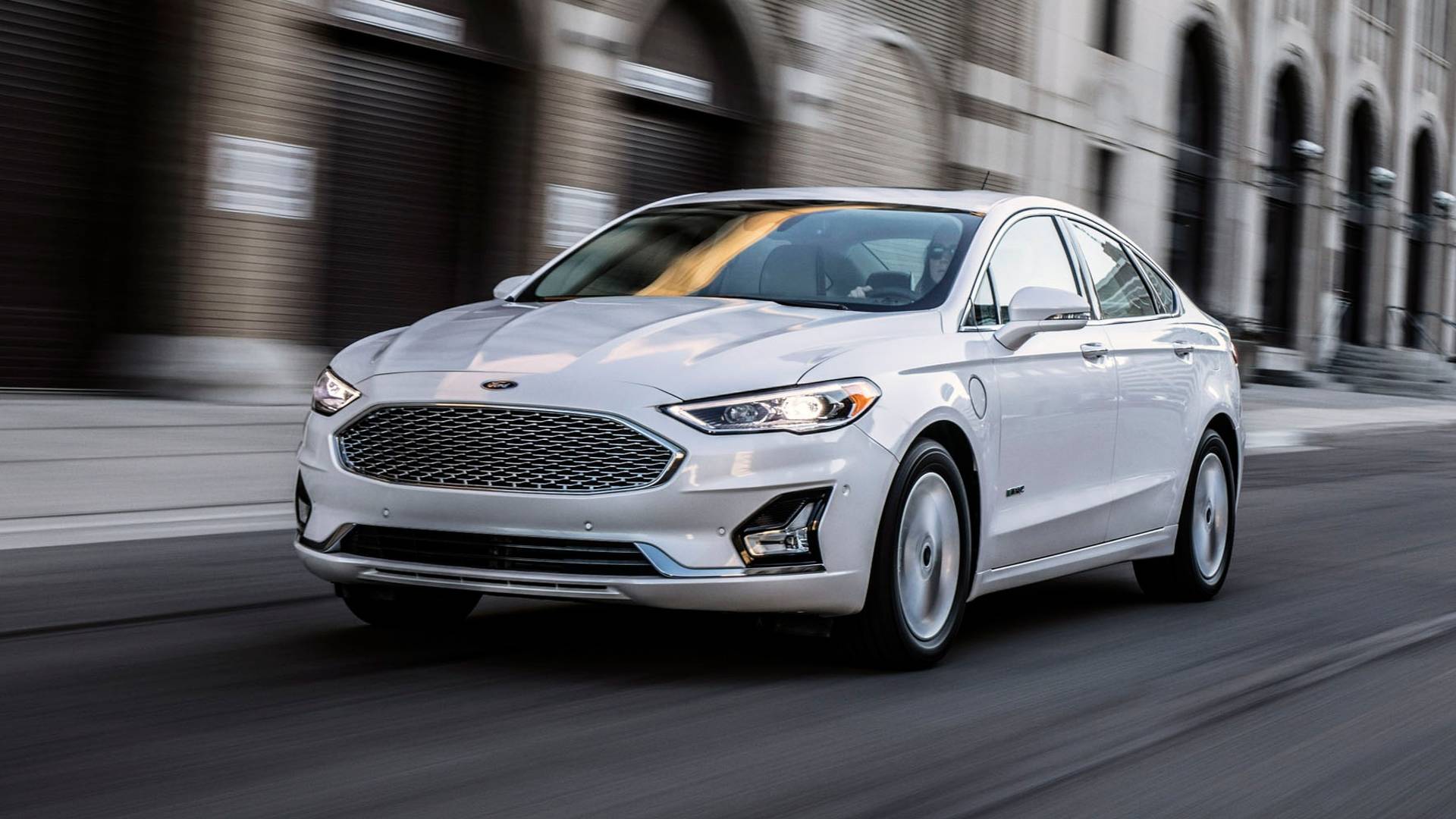
9. **Ford Transit Connect Wagon (2014-2023, Discontinued)**Next up in our gallery of “minivans that forgot to evolve” is the Ford Transit Connect Wagon, a textbook example of attempting to shoehorn commercial utility into a passenger-friendly package without truly committing. Based on Ford’s competent Transit Connect commercial van, the “Wagon” variant received windows, seats, and basic amenities, but crucially, retained the fundamental compromises inherent in its utilitarian platform. The outcome was a vehicle that struggled to satisfy anyone fully—neither maximizing utility for commercial users nor delivering the comfort and refinement families expected. It was an attempt at automotive duality that ultimately fell flat.
Under the hood, the 2.5-liter four-cylinder engine, while adequate for light commercial duties, felt consistently overwhelmed with a full complement of passengers and cargo. It was often buzzy, strained, and a constant audible reminder that you were asking it to do something beyond its primary design. This powertrain’s limitations were compounded by a general lack of refinement and efficiency, a recurring theme among vehicles in this neglected segment. Its performance and fuel economy figures were, to put it mildly, utterly uninspired, failing to keep pace with contemporary expectations for a comfortable and economical family hauler.
Inside, the Transit Connect Wagon’s commercial roots were undeniably front and center. The interior design was spartan and purely functional, unmistakably prioritizing durability and ease of cleaning over genuine passenger comfort or aesthetic appeal. Materials consisted predominantly of hard plastics and basic fabrics, a stark contrast to the inviting and increasingly upscale cabins found in dedicated minivans. The seating, while providing space, lacked the adjustability and plushness crucial for making long journeys tolerable. It was an environment that seemed to perpetually scream “workhorse,” not “happy family adventure,” failing to meet the welcoming and feature-rich interiors that modern families demand.
Moreover, the Transit Connect Wagon mirrored its stagnant brethren in its reluctant embrace of modern technology and safety. Its infotainment system was rudimentary, offering little in the way of seamless smartphone integration or advanced connectivity features. Families, accustomed to intuitive digital experiences, often found themselves yearning for basic amenities standard in less expensive, purpose-built passenger vehicles. Similarly, advanced driver assistance systems were largely absent or relegated to expensive trims, leaving a significant void in modern safety provisions that Gen Z would find both baffling and unacceptable.
Car Model Information: 2024 Volkswagen Tiguan 2.0T SE R-Line Black
Name: Ford Transit Connect
Manufacturer: Ford of Europe
Aka: Ford Tourneo Connect,Volkswagen Caddy,Azure Transit Connect Electric
Production: 2002–present
Class: unbulleted list
BodyStyle: unbulleted list
Layout: Front-engine, front-wheel-drive
Predecessor: unbulleted list
Sp: us
ModelYears: 2010–2023 (North America)
Categories: 2000s cars, 2010s cars, All Wikipedia articles in need of updating, All articles with unsourced statements, Articles with short description
Summary: The Ford Transit Connect is a compact panel van manufactured and marketed by Ford since 2002. Developed by Ford of Europe, the model line replaced sedan-based vans (Ford Escort and Ford Courier vans) with a dedicated commercial vehicle platform. The model line is the second-smallest vehicle of the Ford Transit range, slotted between the Ford Transit Courier LAV and the Ford Transit Custom LCV/MPV. In line with other Ford Transit variants, passenger-oriented models (in Europe) are marketed as the Ford Tourneo Connect with side windows and rear seats.
The first and second-generation Transit Connect has been imported to North America from the 2010 model year. To circumvent the 25% “chicken tax” on imported light trucks, all examples have been imported as passenger vans, with cargo vans converted to the intended configuration after their importation. In the region, the Transit Connect does not have a direct predecessor; the closest vehicle to its size was the standard-length Ford Aerostar cargo van, which ceased production in 1997.
The first-generation Transit Connect was assembled by Ford Otosan (Kocaeli, Turkey) along with Ford Romania (Craiova, Romania). For the second generation, Ford of Europe shifted production to its Ford Valencia Body and Assembly facility (Almussafes, Valencia, Spain). For 2022, a third generation of the Tourneo Connect was released; based on the Volkswagen Caddy, the model line is assembled by Volkswagen in Poland.
Get more information about: Ford Transit Connect
Buying a high-performing used car >>>
Brand: Ford Model: Transit Connect Wagon
Price: $27,995 Mileage: 9,546 mi.

10. **Mercedes-Benz Metris Passenger Van (2016-2023, Discontinued)**And finally, we arrive at the Mercedes-Benz Metris Passenger Van, a vehicle whose very inclusion in this gallery of automotive stagnation speaks volumes. Mercedes-Benz, a brand synonymous with luxury and engineering, attempted to carve a niche in the mid-size van segment, aiming to bridge the divide between robust commercial haulers and refined passenger vehicles. However, much like its less prestigious peers on this list of neglected designs, the Metris Passenger Van ultimately suffered from a profound identity crisis. It rarely delivered the expected Mercedes-Benz polish in a segment that demanded both unflinching practicality and passenger sophistication. It was a utilitarian offering attempting to wear a premium badge, with results that left discerning customers scratching their heads.
While the Metris was equipped with a turbocharged four-cylinder engine, its powertrain often felt more at home in a commercial fleet application than gracefully transporting families. The engine, though capable, frequently lacked the smooth, refined power delivery typically associated with a vehicle bearing the three-pointed star. Critically, and in line with other vehicles on this list, the Metris offered limited efficiency advancements and no form of electrification throughout its tenure. This firmly planted it in the “old guard” of powertrains, a category that Gen Z is increasingly quick to dismiss for its environmental and economic shortcomings. Its primary focus remained on raw capability and durability, qualities that often translated into a less-than-inspiring driving experience for a family.
Stepping into the Metris cabin, one quickly realized that while it might have been robust and durable, it certainly didn’t exude the typical Mercedes-Benz luxury. The interior design elements, materials, and overall aesthetic felt distinctly aligned with its commercial V-Class roots, overtly prioritizing function over the kind of form that fosters comfort and enjoyment. Infotainment and connectivity, utterly crucial for modern families, were often rudimentary compared to sophisticated, integrated systems found in purpose-built passenger vehicles. This pervasive lack of contemporary amenities, coupled with an interior that felt more dated than classic, significantly hampered its appeal to families seeking utility *and* modern creature comforts.
Safety, too, represented a missed opportunity for the Metris to truly distinguish itself. Despite Mercedes-Benz’s reputation for pioneering safety, the Metris Passenger Van often lagged behind in offering a comprehensive suite of advanced driver assistance systems as standard equipment. For a family vehicle from a brand of this caliber, this omission was notable. It underscored a broader trend across this “unchanged for a decade” category: a reluctance to invest in cutting-edge safety features that modern parents not only desire but actively expect as non-negotiable in their family transporters.
So, there you have it: a tale of two distinct minivan worlds. On one side, a surprising renaissance, fueled by innovative designs, electrifying powertrains, and interiors that brilliantly blur the line between sheer practicality and genuine luxury. These are the minivans daring to defy convention, emphatically proving that a family hauler can indeed be cool, remarkably efficient, and technologically forward-thinking – even to the perpetually skeptical eyes of Gen Z. On the other side, a stark, almost painful, reminder of what happens when automakers let their products wither on the vine, stubbornly clinging to outdated philosophies and sacrificing crucial updates. These automotive relics, once perhaps adequate, now serve as prime targets for a generation that unapologetically demands more: more tech, more efficiency, more style, and ultimately, more respect for their hard-earned dollars. The minivan may be back, but only those willing to truly evolve will survive the discerning gaze of the modern family. The future, it seems, is undeniably bright for those who dare to innovate, and decidedly dim for those who simply refuse to change.


